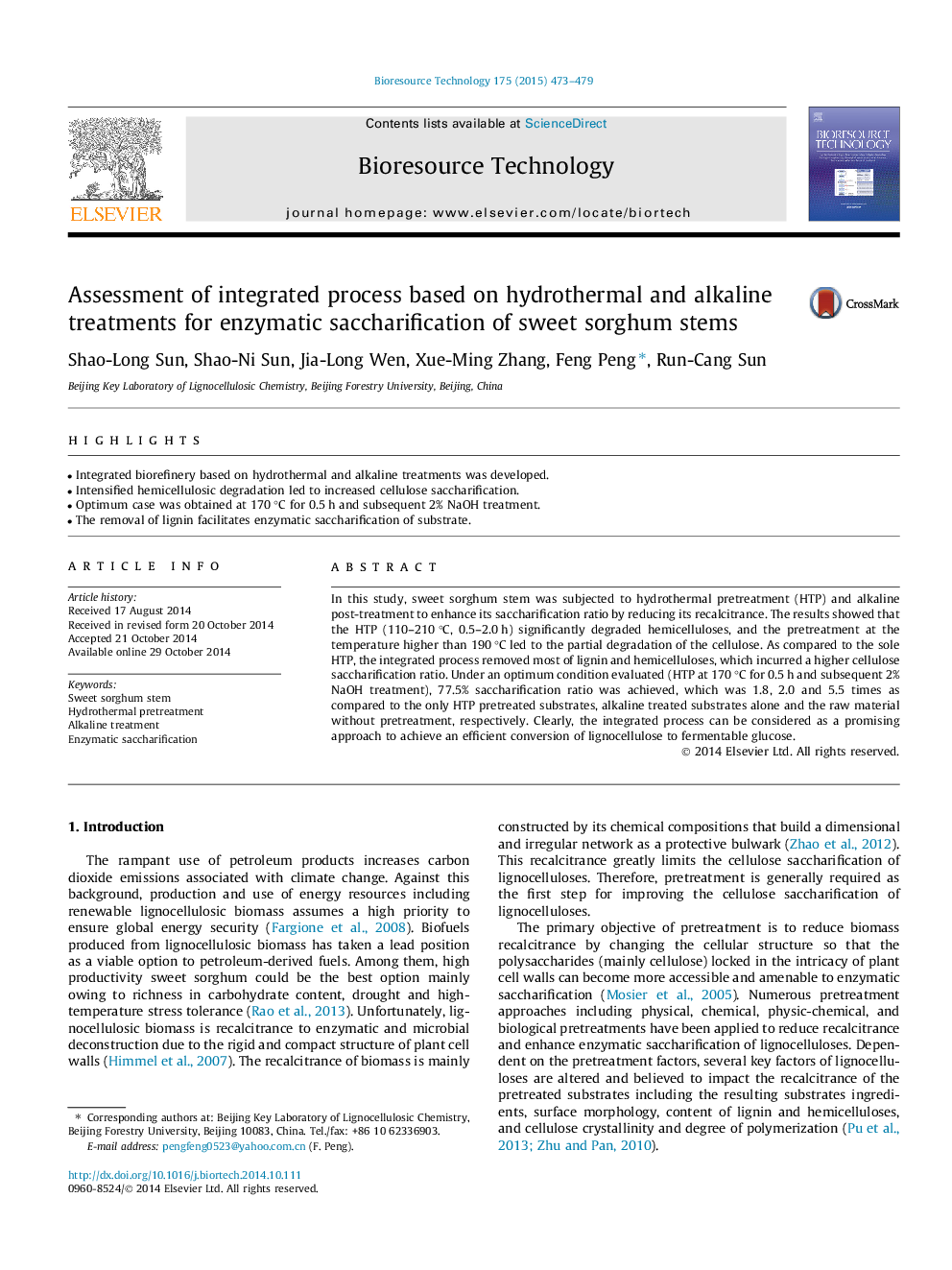| Article ID | Journal | Published Year | Pages | File Type |
|---|---|---|---|---|
| 680329 | Bioresource Technology | 2015 | 7 Pages |
•Integrated biorefinery based on hydrothermal and alkaline treatments was developed.•Intensified hemicellulosic degradation led to increased cellulose saccharification.•Optimum case was obtained at 170 °C for 0.5 h and subsequent 2% NaOH treatment.•The removal of lignin facilitates enzymatic saccharification of substrate.
In this study, sweet sorghum stem was subjected to hydrothermal pretreatment (HTP) and alkaline post-treatment to enhance its saccharification ratio by reducing its recalcitrance. The results showed that the HTP (110–210 °C, 0.5–2.0 h) significantly degraded hemicelluloses, and the pretreatment at the temperature higher than 190 °C led to the partial degradation of the cellulose. As compared to the sole HTP, the integrated process removed most of lignin and hemicelluloses, which incurred a higher cellulose saccharification ratio. Under an optimum condition evaluated (HTP at 170 °C for 0.5 h and subsequent 2% NaOH treatment), 77.5% saccharification ratio was achieved, which was 1.8, 2.0 and 5.5 times as compared to the only HTP pretreated substrates, alkaline treated substrates alone and the raw material without pretreatment, respectively. Clearly, the integrated process can be considered as a promising approach to achieve an efficient conversion of lignocellulose to fermentable glucose.
